As the motorcycling world prepares for the seismic shift to electrification of all new bikes from 2035, there is one company already leading the charge in producing small capacity electric models that do exactly what they say on the tin.
Having launched in the UK just four years ago, Super Soco is now the country’s fastest growing and best-selling electric motorcycle brand. We road tested the Super Soco TC Max to see why they’re so popular.
Let me start by saying that I tested the TC Max in the circumstances for which it’s designed, on my real-world commute – a 12-mile round-trip from my home to the Devitt offices, plus a journey into London for a work meeting.
I put it through its paces on the daily grind, but I didn’t push it out of its comfort zone. If weekend blasts or long-distance ride-outs are your bag, this is perhaps not the bike for you.
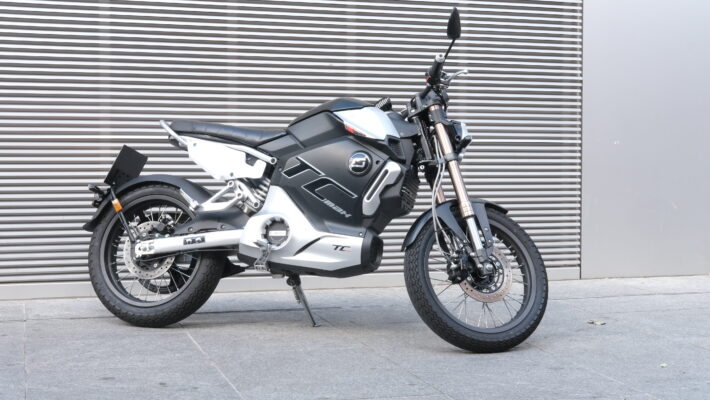
If you are, in Super Soco’s own words, “environmentally aware” and after “convenient and affordable commuting”, then read on!
When the TC Max arrived, my first thought was that it’s actually a lovely-looking machine. The sleek café-racer styling makes it stand out and, for those conscious enough to care on the commute; it’s a perfectly respectable motorcycle to be seen out and about on.
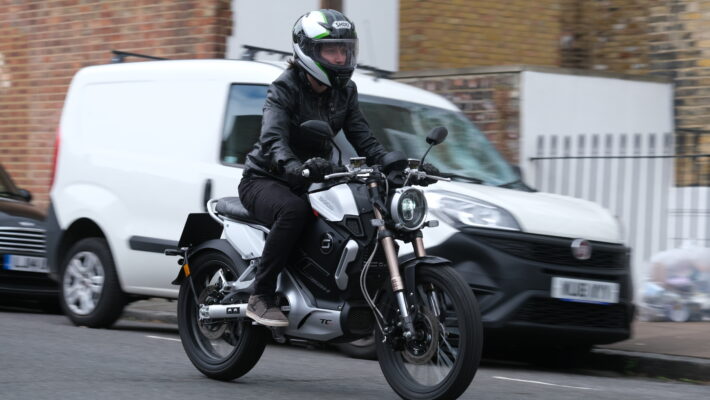
In fact, if it wasn’t for the eerie silence as you glide by, onlookers would be hard-pressed to recognise it as an electric model at all.
Super Soco TC Max Top Speed
The bike is billed as a 125cc-equivalent, with an electric motor that provides peak 5kW power and 3.9kW rated power and is capable of up to 60mph.
This puts it in the CBT and A1 category and makes it accessible as a learner legal model, which is ideal for new riders making the switch to a two-wheel commute post-pandemic. The lack of gears and simple switch between modes 1-2-3 (more on this later) makes the TC Max very easy to hop on and ride.
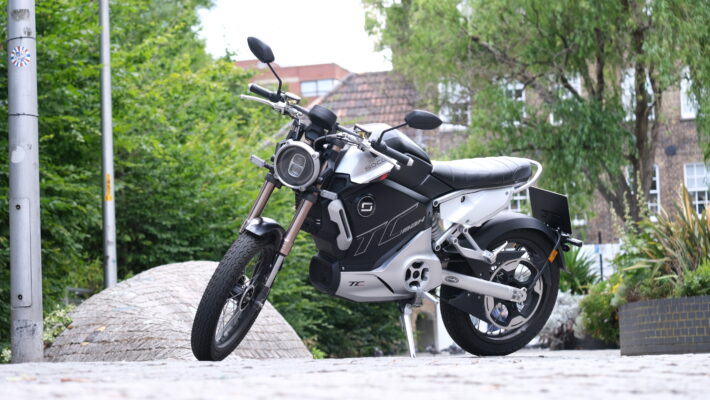
My own commute is a mixture of A-roads and congested urban streets, so I gave the bike a fair stab at reaching its top speed potential on the faster roads and proving its worth in built-up traffic.
I’d say I felt more comfortable with it doing the latter than the former, as the bike is really in its element in town. It’s nippy, agile and actually pretty good fun to ride, perfect for negotiating the city centre and weaving through traffic to get to where you need to be quickly and efficiently.
The aforementioned silence really did take time getting used to. Pulling away from the lights feels plain weird without the revving of the engine, but this is something we’ll all inevitably become accustomed to in time. The lack of being heard did make me far more aware of the need to be seen, which perhaps meant I was more mindful of my own manoeuvres – no bad thing in reality.
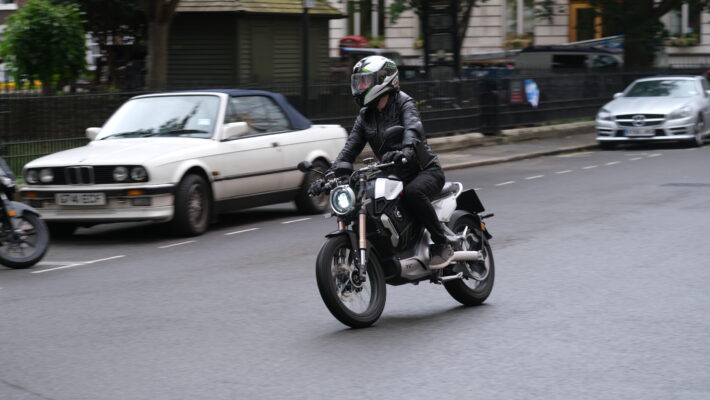
One of the stand-out features for me was the ability to remove the battery from the bike and take it into the office with me, eliminating the need to rely on external charging points. You can fully charge it on a normal three-pin plug in 3-4 hours, so you never have to worry about not having enough juice to get you home.
If it was your own bike, this would also give you the additional peace of mind that the bike is going nowhere fast in the event of an attempted theft.
Speaking of the battery, let’s get to the main sticking point with electric vehicles – the range. Super Soco states a top range of 60 miles, which for my short, daily commute was more than enough.
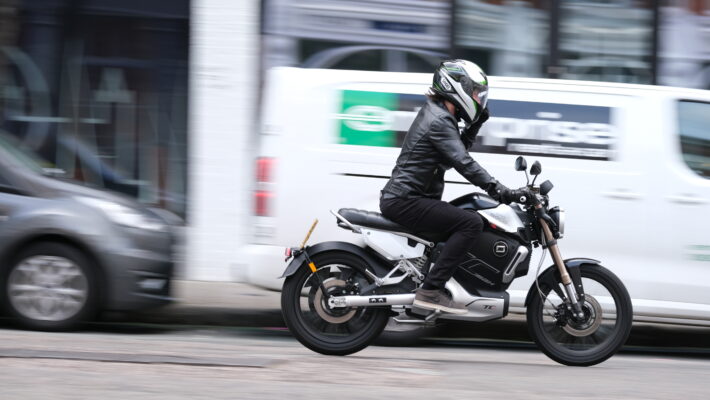
In theory, I could squeeze five days of to-and-fro from home to the office on one charge, but the ease with which you can re-charge the battery means you don’t need to push the bike to its limit.
The three modes I mentioned earlier can be used to restrict the power, with mode 1 giving you a top speed of around 35mph and mode 3 being unrestricted.
I would hazard a guess that you wouldn’t get very close to the top of the quoted 60-mile range in mode 3, but I didn’t put that to the test and I’m sure not many people using the bike for its intended purpose would need to either.
As an aside, I certainly didn’t miss early morning visits to the petrol station and nor did my wallet.
Running costs are of course lower than a petrol equivalent, so although you are probably forking out more up front, you need to weigh up the long-term pros versus the short-term cons.
If I made the switch for example, the cost of my commute would drop from around £154 a year to just £30. You don’t pay any road tax and maintenance is minimal due to the lack of oil, coolant, spark plugs, valves, chains or belts.
From new, the warranty is two years on the bike itself and three years covering the battery as a standalone part.
Super Soco TC Max Price
With the UK Government’s Office for Zero Emission Vehicles Funding (OZEF) grant giving a 20% discount, the TC Max costs £4,249 (alloy wheels) or £4,349 (spoked wheels) and Super Soco also have a finance package with Santander if you want to cushion that initial blow.
If you’re making the move from commuting by train to two-wheels, that’s not much different to the average season ticket price.
To sum up, the TC Max is a bike that performs perfectly well in the habitat for which it’s made.
It’s a slick, city dwelling machine that carves through traffic with ease and provides an efficient and pocket-friendly commuting option in the long term.
As a seasoned motorcyclist, will it set your world alight?
Well, no. But for a new rider looking for an entry-level, easy-to-ride motorcycle that gets them from A to B with the added bonus of being environmentally sound, you can’t go far wrong.
Don’t forget to quote today for many different motorcycle insurance options!
